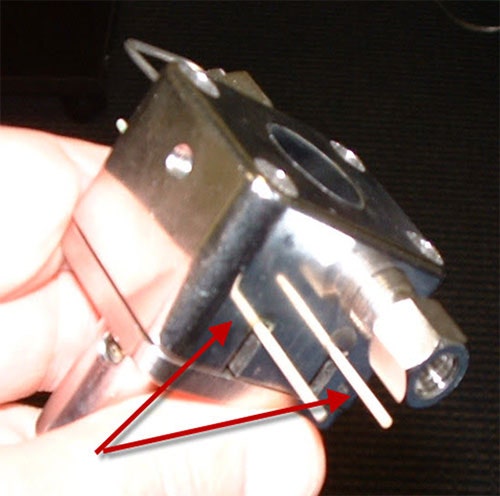Mobile phases that contain any type of salt can be very corrosive to the internal pump parts especially pump pistons and seals. Salt can cause premature wearing of seals and scratching of pistons which causes solvent leaks and in turn, system down time. In order to get maximum life from seals and pistons, the salt needs to stay in solution. Normal operation causes some solvent to remain on the seals which has a tendency to evaporate leaving the salt to cause damage.

|
Using the integrated seal wash system will help stop this effect and provide a longer time between seal and piston changes. There are two ways to operate the seal system; the first is using a syringe and perform a manual flush of the seal system. The second is to set up a gravity feed system for the seal wash. This note will show both applications. Both work well so it is the customers decision which to use. Note: in either case, the wash solvent must not contain salt and it should be a solvent that is capable of dissolving any salt that may have precipitated on the seals.
Figure 1 shows the pump head and seal wash system. The head has been removed from the rest of the pump so it is easier to see the seal wash system. Each piston has its own separate seal wash. Figure 2 and 3 show the upper and lower seal wash flush tubes (red arrows).

|

|
To use the seal wash manually, you will need a syringe and some extra flexible tubing. Fill the syringe with the appropriate solvent and flush a minimum of 5 mL through each seal wash tube. It does not matter in which direction you push the solvent but from the top to the bottom is the easiest since the head is attached to the rest of the pump assembly and the top flush tubes are easier to access. In addition, it is possible flush both sides of the pump head at the same time by leaving the lower junction tubing in place. Figure 4 shows the syringe in position with the junction tubing in place. The manual flush should be done on a daily basis because it is easy to perform and since this is not a continuous flow set up, salt will build up on the backside of the seals.

|
The gravity feed system allows the seals to be continuously washed provided that the solvent reservoir does not run out of solvent. Figure 5 shows the set up for the gravity feed system. You will need two pieces of tubing to connect to the flush tubes, and a solvent reservoir and waste bottle. The waste bottle needs to be lower than the reservoir to create the siphon effect. You can use any type of bottles as long as they are compatible with the solvent. This is the same for the type of tubing to be used. Normally, flexible tubing is better as it is easier to position.

|
To operate, make sure the reservoir is full and attach a syringe to the waste tubing. Then, pull the solvent through the system. Once primed, the solvent will continue to flow keeping the seals and pistons clean. Make sure to empty the wash container on a frequent basis and make sure the reservoir is full. If prime is lost, simply re-prime the system with a syringe.